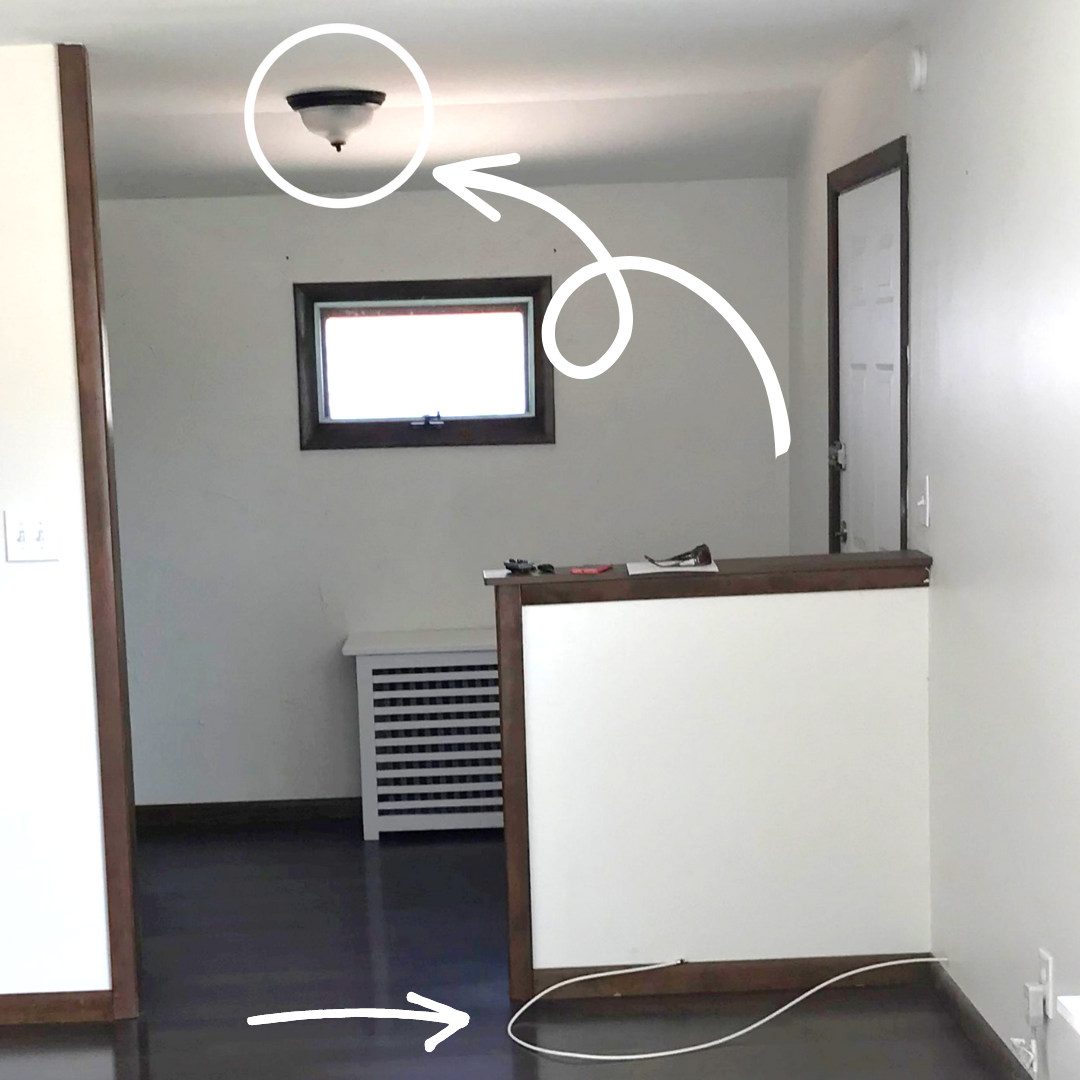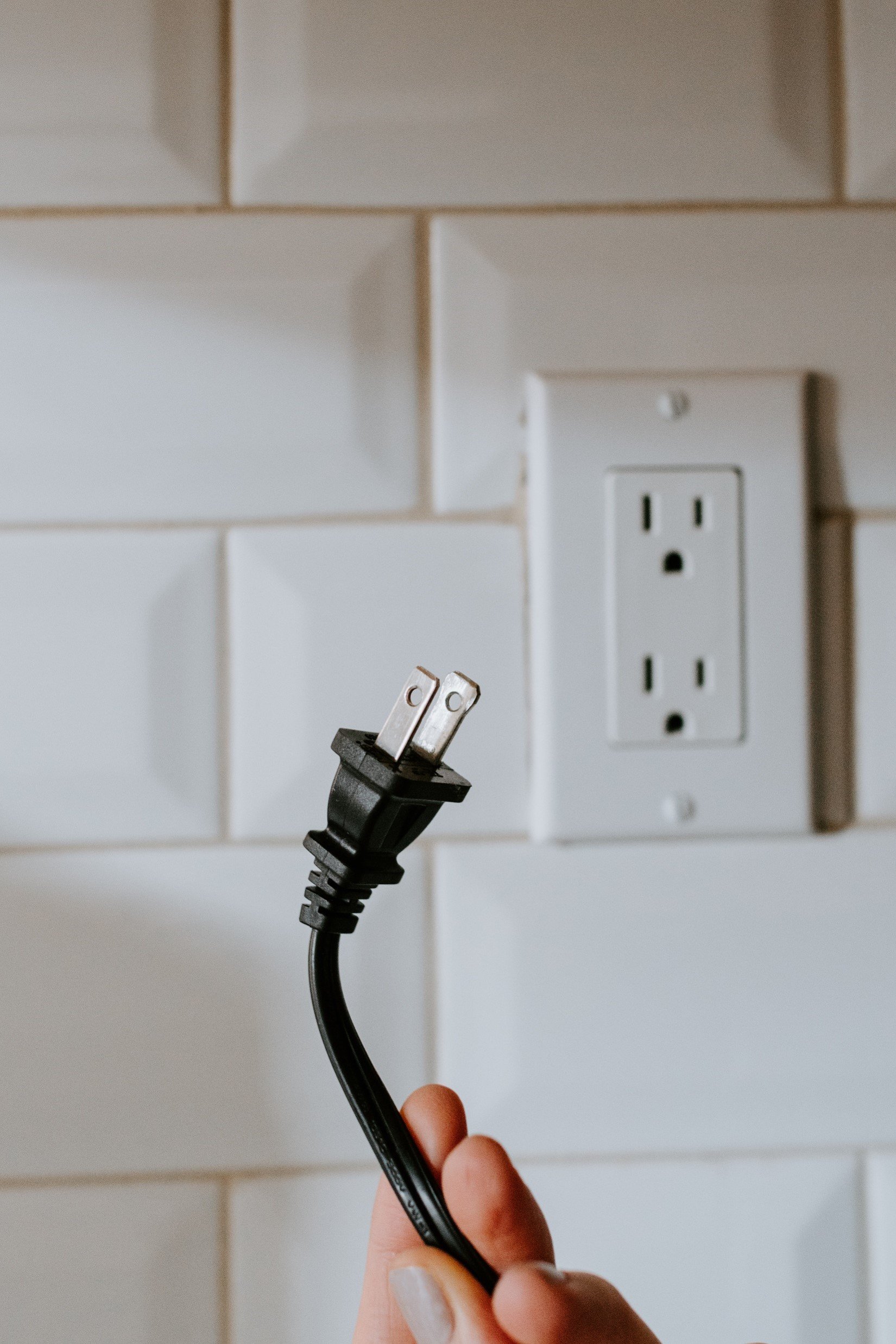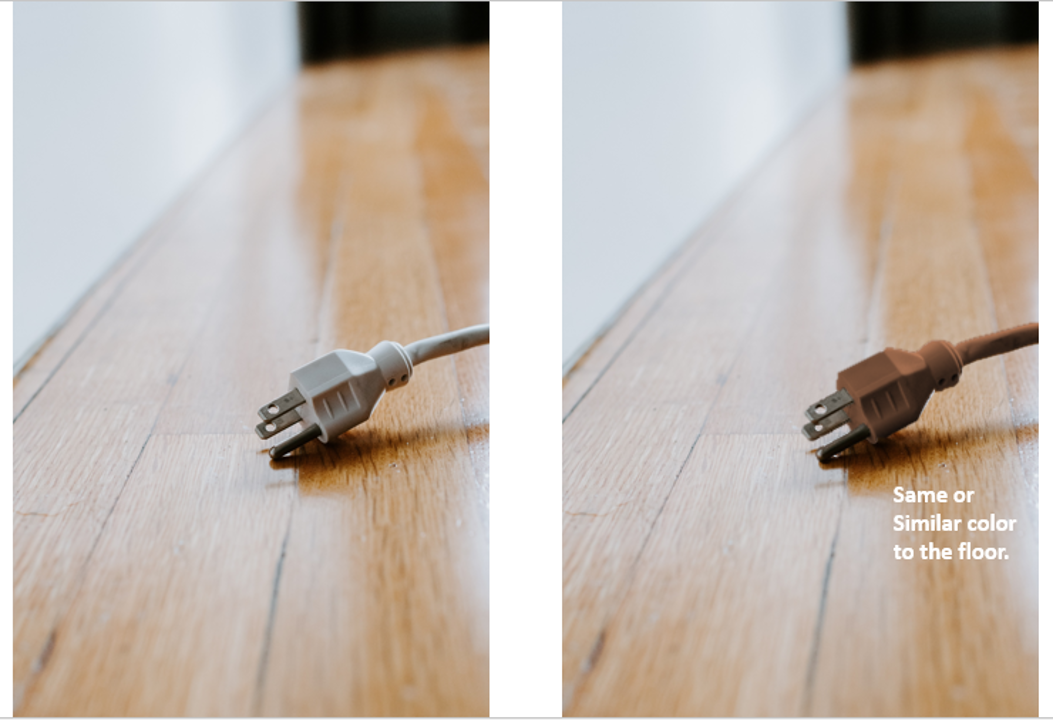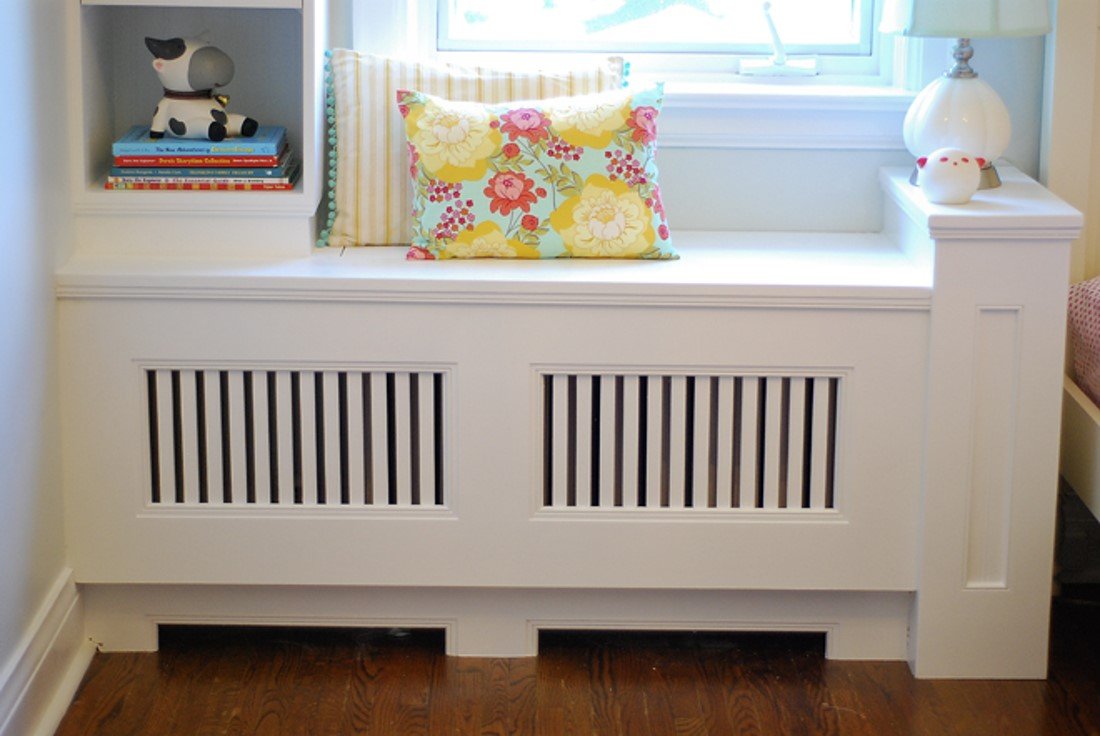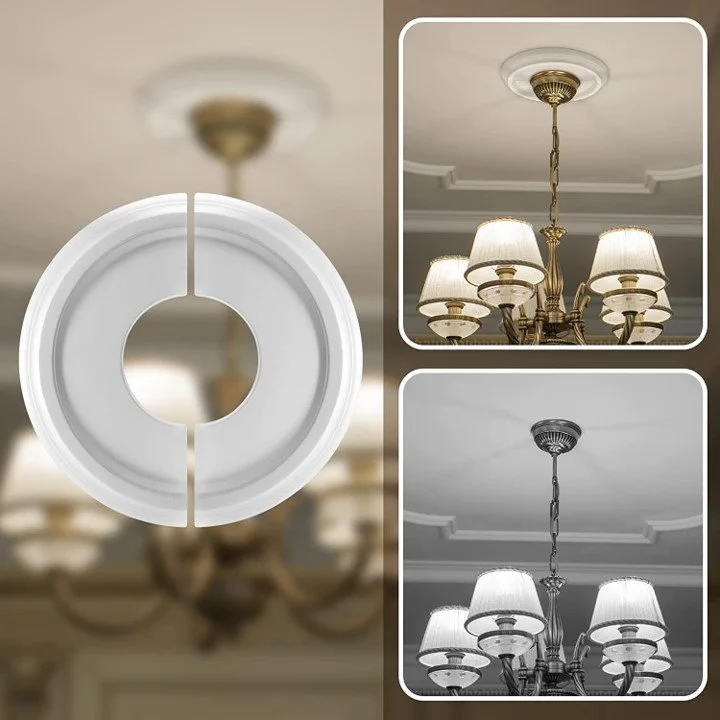We all want our homes to look beautiful and pulled together, but when it comes to small rooms, it can be a bit more challenging.
In every home, there are necessary things that can distract from the overall look and feel of the room, like cords, pipes, or air conditioning units. These are the “eyesores” I’m referring to.
In small rooms, these things can be very noticeable and may even take up precious space.
But just because they must be there, doesn't mean they have to be unsightly or to serve only one purpose...
That's where this post comes in.
Here’s a list of 7 common eyesores found in small rooms and some creative solutions to help you incorporate them into your decor.
The goal here is to inspire you to transform those pesky things into unique design elements that add character and style to your space Not only will these solutions make your room look better, but they’ll also make it more functional.
I’ll show you some genius ways to hide unsightly cords, organize cluttered shelves, and have a more overall organized and livable home.
The best part? These solutions don't require a complete renovation or breaking the bank. With a little creativity and some DIY know-how, you’ll easily turn these eyesores into design elements that elevate your space.
So, whether you're dealing with unsightly light fixtures, bare walls, or furniture with visible wear and tear, I've got you covered.
Let's dive in and explore these 7 common eyesores and the creative solutions that’ll help you transform them into design elements that add personality and style to your small room.
1. Electrical cords
Electrical cords are a necessary evil in most homes, but they can be a real eyesore if left unchecked.
Kelly Sikkema
Fortunately, there are several ways to make them not stand out as much.
You can use cord covers, which come in a variety of colors and styles to match your decor. Many can be painted to match a wall color, so they blend in completely.
If you're feeling creative, try making a cord hub out of a decorative box or some books that can be hollowed out. This will help you corral the cords, so they’re hidden away. You can also try weaving them through a plant to make them part of the room's design.
Cheryl Winn-Boujnida
I’m a big fan of using furniture you can see through in small rooms. Pieces like etageres, ladder shelves, and open end tables, are a staple in my decorating and deign toolbox. But when you can see the wall behind the shelf, you’ll probably see an ugly cord hanging behind it against the wall too, right?
Well, the solution for that is Command Strip cord clips. You can attach these to the back of shelves or consoles so you can weave the electrical cords discretely behind the piece without having them hanging all willy nilly in the open.
Tip: If you can’t avoid running a cord along the floor, get an extension cord that is the same color as the floor so that that it disappears or blends in. This will make them way less noticeable.
Pexels
2. Radiators or air conditioning units
Your small room needs heat and cooling, but sometimes radiators and air conditioning units can be super unsightly, or at the least, they’ll take up floor space.
Get Lost Mike
One simple fix is to move a large potted plant in front of a window AC unit so that it still has full access to move cool ai into the room, but the plant obscures it so that it’s not the focus anymore.
Get Lost Mike
Another solution is to paint them in a color that matches the room's decor. For example, if you have a colorful focal wall, paint the radiator or air conditioning unit that same color to blend in.
In my house, I have radiator covers that fit neatly on top of all my units in each room. These were here when I moved in, but they are a DIY from a previous owner. They’re made of simple MDF with a perforated screen so that heat gets through. The best part is they’re essentially built-in console tables in all my rooms where I can put décor or lamps on them.
You can also use these units as a base for a DIY bookshelf or window seat. Just be sure to leave enough space around the unit for enough airflow.
3. Unsightly light fixtures
Let’s talk about boob lights… They’re the cheapest, non-design ceiling lights next to a bare bulb you can get. That doesn’t mean you must “live” with them.
The permanent solution is to replace them with new fixtures that jive with your taste. If that's not an option, you can install a ceiling medallion to draw attention away from the fixture.
Tip: If you can’t, or don’t want to, remove the entire fixture, just remove the “boob” shape shade cover, and place a new shade over the bare bulb. You can modify an existing lamp shade or DIY a new lamp shade using the bulb harp from an old shade. 1.2.3 and you’ll have a much nicer and unique ceiling fixture.
4. Exposed pipes or ductwork
The pipe and channels that carry air, water and gas throughout your house are necessary. But, if the industrial look is not your vibe, these exposed elements can be distracting eyesores.
Jonathan Cooper
You could also enclose them with drywall. This will create soffits and room bump-ins but the tradeoff is much more visually appealing than exposed, utilitarian things.
Max Rahubovskiy
If closing them up isn’t going to work, you can paint them in a color that complements the room's color scheme. If you have a 2 color tone ceiling, paint the pipes and ductwork to match. Painting them to match the surrounding wall or ceiling will make them much less noticeable.
Tip: You can also use these elements as a base for hanging plants or artwork. This is about hiding these eyesores in plain sight. Just be sure to use appropriate hardware to ensure that the items are securely mounted.
Valeria Boltneva
5. Furniture with visible wear and tear
Furniture with visible wear and tear can be a real eyesore in small rooms, but there are several ways to incorporate them into the decor of the room.
First, you use slipcovers, throws, or decorative pillows to cover up worn spots. This is a tried-and-true way to cover up the oopsies that tend to happen over time. This not only hides the damage, but it also adds texture and color to the room.
Sprintz Vintage Dresser
Second, if you have worn wood furniture, you can paint, decoupage or stencil it to cover scratches, water marks or chips to give it new life.
Third, if your upholstery has stains or surface wear, give it a coat of paint. What?! I know, it sounds kooky, but you can paint old upholstery to cover up little imperfections. The surprising thing is that it creates a “leather” like surface that is quite durable. Best of all, your old, worn stuff could look brand new in a jiffy with minimal effort! Pshaw to reupholstering!
With a little creativity, you can turn an eyesore into a unique and beautiful piece of furniture.
6. Cluttered shelves
Samet Kurtkus
Cluttered shelves are a common eyesore in small rooms, but they can be easily cleaned up to enhance the decor of the room with a few organizational tricks.
The easiest solution is to declutter. That means ruthlessly go through your stuff and decide what to keep and what to move or part with. Remove everything from the shelf and create 3 piles: keep, donate, toss.
Toss: cracked, broken or damaged décor. It served it purpose, brought you joy, now it’s time to go.
Donate: this consists of décor that is still intact, but that is no longer wanted or needed. If it doesn’t bring you joy, bid it adieu.
Keep: this is stuff that still looks great and makes you happy. (However, it might not need to go back on the shelf. You could find another spot in the house where it would look better. Switching out décor from one place to another can make the item feel like a brand new thing again. It might even spark renewed joy in you!)
Tip: When it’s time to put stuff back on the shelf remember to vary your lines, heights and shapes of décor and ALWAYS leave empty space here and there. Negative space is an important key to making shelf décor look good. Mix up open and closed storage by using decorative baskets, boxes, or bins to organize and conceal clutter.
Spacejoy
7. Bare walls
Bare walls can be an eyesore in any room, especially small ones, but it doesn’t have to be that way…
Use wallpaper, decals, or stencils to add interest to plain walls. This is a great way to add texture and pattern to a room without overwhelming it.
Another idea is to hang artwork or photographs in a gallery-style display. This not only adds color and interest to the room, but it also gives it a personal touch.
Johnny Briggs
You can add wood moldings, trim or board and batten to bare walls to give them an interesting profile and some depth.
Tip: Add floor to ceiling shelves to bring in some display and storage to a small room. These installations create depth and layering. You can crate a whole new focal area in a small room by adding shelves and layering seating like swivel chairs in front of them.
Jon Tyson
To sum up, transforming those pesky eyesores into design elements that add character and style to your small room is easier than you might think.
As you can see, using a few creative solutions, you can hide cords, turn exposed pipes into art, and even repurpose old furniture to make your space more functional and aesthetically pleasing.
Don't let those necessary elements detract from the overall look and feel of your small room.
Roll up your sleeves and apply some DIY know-how to turn those eyesores into design elements that elevate your space.
Remember, small changes can make a big impact, so don't be afraid to get creative and experiment with different solutions until you find the perfect fit.
Now it’s your turn…
Do you have other creative solution for those pesky eyesores in your home? I’d love to hear what you did to make them beautiful parts of your design story. Leave me a comment below and tell me all about it.
Read Next
Spice Up Your Space: A Guide To Choosing Art For Your Home
Looking to add some personality to your home with art? Check out this guide on choosing art for your home. From finding an inspiration piece to creating a mood board layout, I've got you covered with tips and tricks to make the process easier. Start exploring the world of art and transform your space today!
Join the Fun!
If you enjoyed this post and you want to keep seeing my weekly blog, the best way to do that is to subscribe.
You can subscribe by downloading my 11 Secrets Only Designers Know to Make Your Space Rock. If you’re curious about how decorators and designers make a home look magazine ready, you’ll love taking a gander at these 11 secrets. You’ll learn how to style your room from the floor up and it will work for ANY space you have.
I write about small space design and decorating, sustainable furniture options, positive self care and a variety of do-it-yourself home décor.
I’d love to connect with you!
“Michael Helwig was top-notch, very professional and responsive to my needs. He allowed me time to explore ideas and try out a variety of combinations until we found the perfect fit. Michael provided detailed information and offered beautiful ideas to make my dream living room become a reality. The furniture he sourced has totally transformed my living room space. Everyone that has seen my new living room has one word, WOW! A special thank you to Michael for a wonderful experience.”
“Michael was very knowledgeable and guided us, with great patience and good humor, through the process of designing our dining room and helping us find the perfect sleeper sofa. He offered really helpful advice when we asked questions - which was often - but at no time did we ever feel pushed. He helped me when I felt like I couldn’t make one more decision. When my new furniture finally arrived I realized everything down to the pillows was perfect. I couldn’t be happier!”
Michael is Principal designer and blogger at Michael Helwig Interiors in beautiful Buffalo, New York. Since 2011, he’s a space planning expert, offering online interior e-design services for folks living in small homes, or for those with awkward and tricky layouts. He’s a frequent expert contributor to many National media publications and news outlets on topics related to decorating, interior design, diy projects, and more. Michael happily shares his experience to help folks avoid expensive mistakes and decorating disappointments. You can follow him on Pinterest, Instagram and Facebook @interiorsmh.

